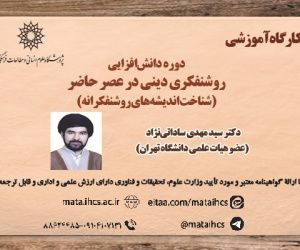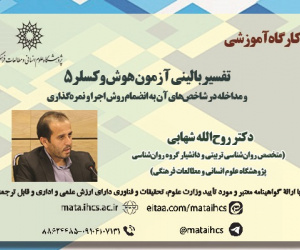مواجهه آیسخولوس با حکایت اساطیری کهن در نمایشنامه «آگاممنون»؛ بررسی تطبیقی حکایت بازگشت از تروا تا قتل آگاممنون و کاساندرا در منابع پیشینی و نمایشنامه (مقاله علمی وزارت علوم)
درجه علمی: نشریه علمی (وزارت علوم)
آرشیو
چکیده
حکایت بازگشت آگاممنون به همراه کاساندرا بعد از ده سال جنگ در سرزمین تروا به آرگوس و سپس قربانی شدن آنها به دست کلوتمنسترا و با یاری آیگیستوس دستمایه آیسخولوس در تراژدی آگاممنون است. بازگفت های دیگری از این حکایت اساطیری که قدمت آنها از نمایشنامه آیسخولوس هم بیشتر است، امروزه در دست است. در این مقاله کوشیده ایم ابتدا بازگفت های کهن را بررسی کنیم و سپس در یک مطالعه تطبیقی ببینیم آیسخولوس در روایت خود از حکایت اساطیری چه نوآوری هایی داشته، بر کدام عناصر تأکید کرده و چه برداشتی ارائه داده است و به این ترتیب راهبرد او در اقتباس دراماتیک برای به صحنه آوردن یکی از مهم ترین مقاطع در سرگذشت خاندان شاهی آرگوس را روشن کنیم. منابع پیشینی این حکایت که آنها را بررسی کرده ایم عبارت اند از کتاب ادیسه، بازگشت یونانیان، اشعار غنایی و تصاویر کهن. سپس در بررسی رویکرد اقتباسی آیسخولوس بر چهار وجه ویژه در نمایشنامه انگشت گذاشته ایم: اول دلالت معنایی کاخ شاهی با تکیه بر کاربست واژه daimon (روح اهریمنی)؛ دوم غیاب آیگیستوس در بخش اعظم نمایشنامه؛ سوم تصویر یگانه ای که آیسخولوس از کلوتمنسترا در هیأت زنی قدرتمند و قدرت طلب، کینه جو، عاشق و حسود به دست داده؛ و چهارم امکانی که آیسخولوس فراهم کرده است تا مخاطب بتواند رخدادهای نمایشنامه را در چارچوب کلی تر حکایت های اساطیری بازگشت سرداران یونان از تروا بعد از پیروزی بزرگ درک کند. به این ترتیب درخواهیم یافت چگونه آیسخولوس داستانی کهن را دستمایه خلق نمایشنامه ای چندوجهی کرده که در پیوند با بافت فرهنگ اساطیری و مذهبی یونان باستان معناهای تازه ای پیش می کشد که در بازگفت های پیشین از آنها اثری نیست و این گونه از روایت ساده پی رنگ خود فراتر می رود، در عین آن که معناهای سیاسی و اجتماعی تولید می کند، اثرگذار است و نیز یکی از به یادماندنی ترین شخصیت ها در تراژدی های برجامانده از یونان باستان را به صحنه می آورد.Aeschylus’ encounter with an ancient mythical tale in “Agamemnon”; is a comparative study of Agamemnon and Cassandra’s tale in previous sources and the play
The narrative of Agamemnon’s return along with Cassandra after ten years of war in the land of Troy to Argos, and subsequently their sacrifice at the hands of Clytemnestra with the assistance of Aegisthus, forms the basis of Aeschylus’s tragedy “Agamemnon”. Other retellings of this ancient mythical tale predating Aeschylus’s play are available today. In this article, we have attempted first to examine ancient retellings and then, in a comparative study, explore the innovations that Aeschylus introduced in his narrative of the mythical tale. We have analyzed which elements he emphasizes and what interpretation he provides. Through this approach, we aim to shed light on Aeschylus’s dramatic adaptation strategy for bringing one of the most crucial episodes in the saga of the Argive royal family to the stage. The previous sources that we have examined regarding this mythical tale include the book “Odyssey”, the book “The Return of the Greeks” (Nostoi), lyrics, and ancient images. Then we have approached Aeschylus’s adaptation from four distinct angles: symbolic significance of the royal palace (Aeschylus uses the term “daimon” (a divine spirit or force) to convey the palace’s deeper meaning); Aegisthus’s absence (Aegisthus is conspicuously absent from a significant portion of the play); Clytemnestra’s complex portrait (Aeschylus paints a unique picture of Clytemnestra -a powerful, ambitious, vengeful, and envious woman); broader mythical context (Aeschylus provides a framework for the audience to understand the play’s events within the broader context of the return of Greek leaders from Troy after their momentous victory). Consequently, we have explored how Aeschylus transforms an ancient tale into a multifaceted creation, weaving elements of cultural and mythological context of ancient Greece together. He also introduces fresh meanings that were absent in previous retellings. Aeschylus transcends the simplistic old narratives generating political and social implications. Moreover, he brings to life one of the most memorable characters in the surviving tragedies of ancient Greece.







